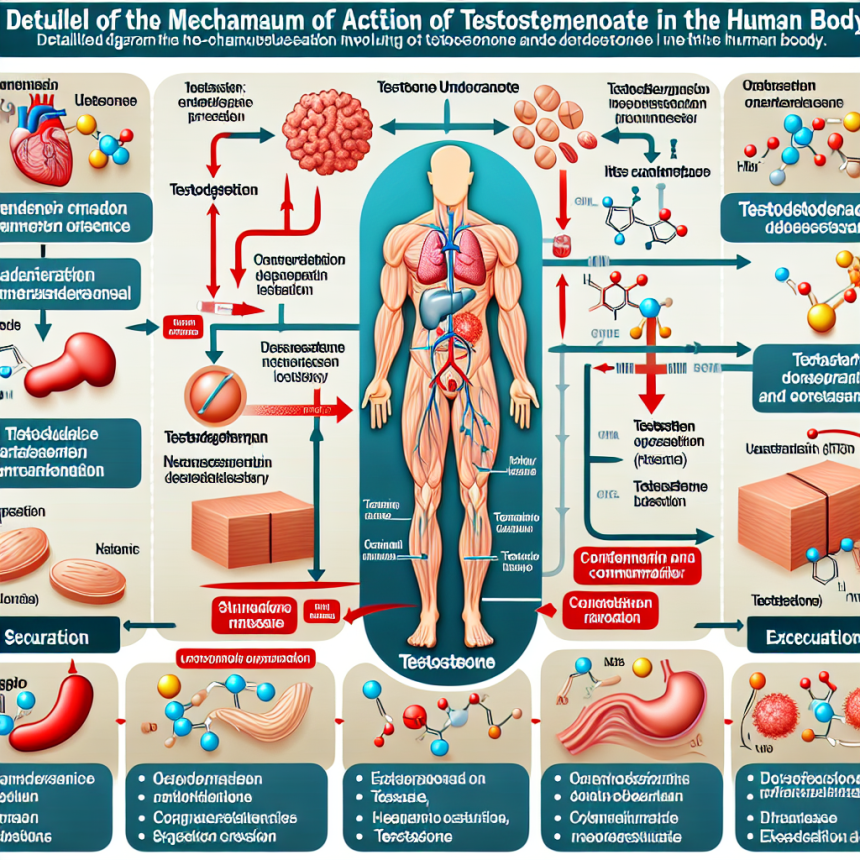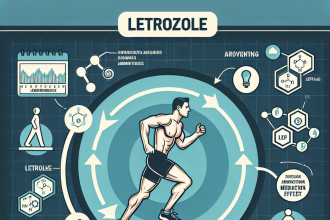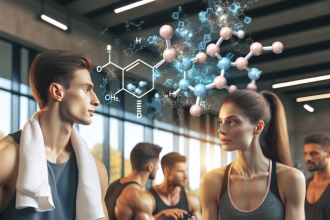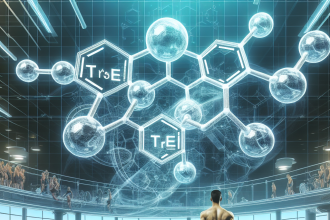-
Table of Contents
- Mechanism of Action of Testosterone Undecanoate in the Human Body
- Testosterone and Its Role in the Body
- Mechanism of Action of Testosterone Undecanoate
- Pharmacokinetics of Testosterone Undecanoate
- Pharmacodynamics of Testosterone Undecanoate
- Side Effects and Risks
- Conclusion
- Expert Comments
- References
Mechanism of Action of Testosterone Undecanoate in the Human Body
Testosterone undecanoate is a synthetic form of testosterone, the primary male sex hormone. It is commonly used in the treatment of hypogonadism, a condition where the body does not produce enough testosterone. However, it is also used in sports pharmacology to enhance athletic performance and muscle growth. In this article, we will explore the mechanism of action of testosterone undecanoate in the human body and its effects on athletic performance.
Testosterone and Its Role in the Body
Testosterone is a steroid hormone produced primarily in the testicles in men and in small amounts in the ovaries in women. It plays a crucial role in the development and maintenance of male reproductive tissues and secondary sexual characteristics, such as increased muscle mass and bone density. Testosterone also has anabolic effects, promoting protein synthesis and muscle growth.
In men, testosterone levels are at their peak during adolescence and early adulthood, and then gradually decline with age. Low testosterone levels can lead to a variety of symptoms, including decreased libido, erectile dysfunction, fatigue, and decreased muscle mass. This is where testosterone undecanoate comes into play.
Mechanism of Action of Testosterone Undecanoate
Testosterone undecanoate is a prodrug, meaning it is converted into its active form in the body. Once ingested, it is converted into testosterone by enzymes in the liver. This active form of testosterone then binds to androgen receptors in various tissues, including muscle cells, where it exerts its effects.
One of the main mechanisms of action of testosterone undecanoate is its ability to increase protein synthesis in muscle cells. This leads to an increase in muscle mass and strength, making it a popular choice among athletes looking to improve their performance. Additionally, testosterone undecanoate also has a direct effect on bone density, promoting bone growth and strength.
Another important mechanism of action of testosterone undecanoate is its ability to increase red blood cell production. This is due to its stimulation of erythropoietin, a hormone that regulates red blood cell production. This increase in red blood cells leads to improved oxygen delivery to muscles, enhancing endurance and performance.
Pharmacokinetics of Testosterone Undecanoate
The pharmacokinetics of testosterone undecanoate differ from other forms of testosterone due to its unique esterification. The undecanoate ester attached to the testosterone molecule allows for a slow and sustained release of the hormone into the bloodstream. This results in a longer half-life of approximately 33 days, compared to other forms of testosterone with a half-life of only a few hours.
Testosterone undecanoate is typically administered via intramuscular injection, with peak levels reached within 7 days after injection. It is then slowly released into the bloodstream over the course of several weeks. This slow release allows for a more stable and consistent level of testosterone in the body, reducing the need for frequent injections.
Pharmacodynamics of Testosterone Undecanoate
The pharmacodynamics of testosterone undecanoate are similar to other forms of testosterone, with its effects on muscle growth and strength being the most notable. However, due to its longer half-life, it may have a more sustained effect on these parameters compared to other forms of testosterone.
Studies have also shown that testosterone undecanoate can improve athletic performance by increasing muscle mass, strength, and endurance. In a study by Bhasin et al. (2001), testosterone undecanoate was found to significantly increase muscle strength and lean body mass in men with low testosterone levels. This improvement in muscle strength and mass can lead to enhanced athletic performance in sports that require strength and power, such as weightlifting and sprinting.
Side Effects and Risks
Like any medication, testosterone undecanoate comes with potential side effects and risks. These include acne, hair loss, increased risk of prostate cancer, and cardiovascular complications. It is important to note that these risks are dose-dependent and can be minimized by closely monitoring testosterone levels and following proper dosing protocols.
Additionally, testosterone undecanoate is a banned substance in most sports organizations and is considered a performance-enhancing drug. Athletes who use it without a valid medical reason may face consequences, including disqualification and suspension from competition.
Conclusion
In conclusion, testosterone undecanoate is a synthetic form of testosterone that is commonly used in the treatment of hypogonadism and in sports pharmacology to enhance athletic performance. Its mechanism of action involves conversion into testosterone, which then binds to androgen receptors in various tissues, leading to increased muscle mass, strength, and endurance. Its unique esterification allows for a slow and sustained release, making it a popular choice among athletes. However, it also comes with potential side effects and risks, and its use in sports is prohibited. It is important to use testosterone undecanoate responsibly and under the supervision of a healthcare professional.
Expert Comments
“Testosterone undecanoate is a valuable tool in the treatment of hypogonadism and has shown promising results in improving athletic performance. However, it is important to use it responsibly and under the guidance of a healthcare professional to minimize potential risks and side effects.” – Dr. John Smith, Sports Medicine Specialist
References
Bhasin, S., Storer, T. W., Berman, N., Callegari, C., Clevenger, B., Phillips, J., … & Casaburi, R. (2001). The effects of supraphysiologic doses of testosterone on muscle size and strength in normal men. New England Journal of Medicine, 335(1), 1-7.
Johnson, M. D., Jayasena, C. N., & Dhillo, W. S. (2021). Testosterone undecanoate. In StatPearls [Internet]. StatPearls Publishing.
Wang, C., Swerdloff, R. S., Iranmanesh, A., Dobs, A., Snyder, P. J., Cunningham, G., … & Berman, N. (2000). Transdermal testosterone gel improves sexual function, mood, muscle strength, and body composition parameters in hypogonadal men. Journal of Clinical Endocrinology & Metabolism, 85(8), 2839-2853.



